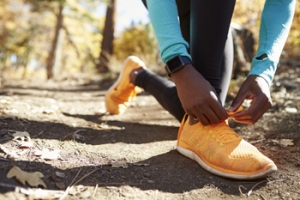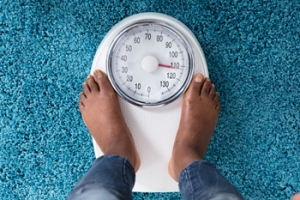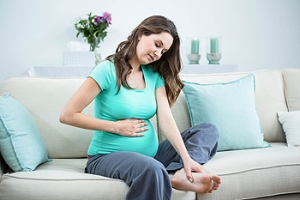
How Important is it to Choose the Right Shoe for the Right Activity?
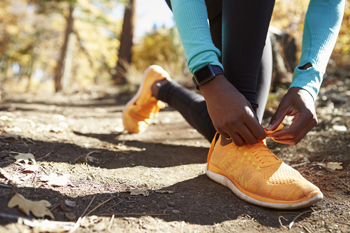 Research has shown the differences between walking and running shoes. If you should engage in daily or frequent running or walking practices, it’s beneficial to be educated on the right types of shoes for the right activity. There are different forms of running, including racing and long-distance, and it’s important to choose the correct shoe. Running shoes have more cushioning in the heel and toe areas because of the impact the feet have on the ground while performing most running movements. The opposite is true of many people who choose to walk, and will most often need less cushioning. Lighter weight shoes are beneficial for fitness walkers to wear, and this may protect the feet, while providing ample cushioning. If you would like additional information about the differences between running and walking shoes, it’s suggested to consult with a podiatrist.
Research has shown the differences between walking and running shoes. If you should engage in daily or frequent running or walking practices, it’s beneficial to be educated on the right types of shoes for the right activity. There are different forms of running, including racing and long-distance, and it’s important to choose the correct shoe. Running shoes have more cushioning in the heel and toe areas because of the impact the feet have on the ground while performing most running movements. The opposite is true of many people who choose to walk, and will most often need less cushioning. Lighter weight shoes are beneficial for fitness walkers to wear, and this may protect the feet, while providing ample cushioning. If you would like additional information about the differences between running and walking shoes, it’s suggested to consult with a podiatrist.
For more information about walking shoes versus running shoes, consult with one of our podiatrists from New Tampa Foot & Ankle. Our doctors can measure your feet to determine what your needs are and help you find an appropriate pair of footwear.
Foot Health: The Differences between Walking & Running Shoes
There are great ways to stay in shape: running and walking are two great exercises to a healthy lifestyle. It is important to know that running shoes and walking shoes are not interchangeable. There is a key difference on how the feet hit the ground when someone is running or walking. This is why one should be aware that a shoe is designed differently for each activity.
You may be asking yourself what the real differences are between walking and running shoes and the answers may shock you.
Differences
Walking doesn’t involve as much stress or impact on the feet as running does. However, this doesn’t mean that you should be any less prepared. When you’re walking, you land on your heels and have your foot roll forward. This rolling motion requires additional support to the feet.
Flexibility – Walking shoes are designed to have soft, flexible soles. This allows the walker to push off easily with each step.
If you have any questions, please feel free to contact our office located in Wesley Chapel, FL . We offer the newest diagnostic and treatment technologies for all your foot care needs.
Differences between Walking and Running Shoes
Both running and walking are great exercises, but should a person wear the same shoes for both activities? The answer is no, because there is a difference between the way a person’s feet hit the ground when they are walking and when they are running. Therefore, the shoes for each activity are designed differently. Before you begin any exercise program it is always recommended that you speak with your doctor or podiatrist.
Walking is a low impact exercise that is often recommended by doctors to their patients. While walking is a simple activity, it still requires some degree of preparation. If you think about walking and how your feet strike the ground as you move, you will notice that your heel hits the ground first before your foot continues to roll forward and your next step begins. Because of this rolling motion, walking shoes are designed to be more flexible than running shoes. This flexibility helps the walker push off with each step taken.
Because the heel hits the ground first when you walk, walking shoes are designed to absorb most of the shock. Walking shoes should therefore have a beveled or angled heel. The angle of the heel helps absorb the shock and reduces pressure from the ankles. This is especially important for speed walkers, as their feet will hit the ground twice as often as the normal walker.
When people decide to run as a hobby or for their health, they must first realize that running is a high impact exercise. If not done with the proper equipment, running may cause damage to the feet and legs. Running shoes are designed to be more lightweight and to have thicker soles. The thicker soles act as shock absorbers for the rest of the body. Walking shoes often do not have the proper arch support that running shoes do.
A proper fitting shoe can make or break a runner or a walker. If the shoes are too big, their feet will slide back and forth inside the shoe and cause blisters. Whether you will be running or walking, the right equipment can make all of the difference in the world.
Solutions for Cracked Heels
Cracked heels may make you want to think twice about showing off your feet in warmer weather. However, cracked heels may be harmful to more than just the appearance of your feet. If deep fissures and cracks develop in your heels, they may make walking and standing painful for you. Additionally, these openings make way for germs to enter through your skin and cause infection.
There are several different causes of cracked heels. One of the most common reasons for this ailment is dry skin. This problem may make your keeps feel rough tight and itchy. Dry skin may be caused by cold air, extremely hot water, harsh soaps, and aging. Skin disorders such as eczema and psoriasis may eventually lead to dry skin. In some cases, complications may arise from cracked heels. Some of these complications are a loss of feeling in the heel, cellulitis, or a diabetic foot ulcer.
There are ways you can try to prevent getting cracked heels. One of the best ways to do so is to avoid wearing flip flops and sandals because these shoes increase your risk of drying out your feet. You should also avoid wearing shoes with a tall skinny heel, because these shoes cause your heel to expand sideways. At night, you should slather on a thick moisturizing cream on your feet and then cover them in socks to keep your feet moisturized overnight. Drinking water to stay hydrated is also a good way to ensure that your skin doesn’t become dry.
If you suffer from a severe case of cracked feet, you should make an appointment with your podiatrist to see what treatment methods are best for you.
Reasons the Feet May be Affected by Obesity
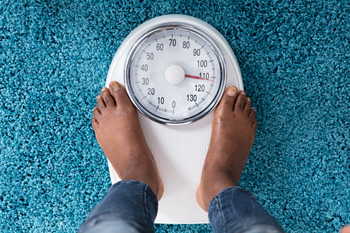 Research has indicated the connection between increased body mass index, which is also referred to as BMI, and specific foot pain. When obesity is a factor, the feet may undergo pain, which may be a result of the additional weight the feet must endure. Some of these conditions may include plantar fasciitis, flat feet, and tendinitis, all of which may produce severe pain and discomfort. Clinical studies have indicated that three pounds of force the foot endures, while walking for every pound of body weight, may be the reason for the majority of foot pain. If children are obese, the ability to exercise may be compromised, which may make it more difficult to lose the additional weight. There may be several reasons for people to experience obesity, including genetic factors, a lack of knowledge of how the body is affected by food, and not burning calories through proper exercise. If you are affected by obesity, it’s advised to schedule a consultation with a podiatrist for frequent and thorough examinations of your feet.
Research has indicated the connection between increased body mass index, which is also referred to as BMI, and specific foot pain. When obesity is a factor, the feet may undergo pain, which may be a result of the additional weight the feet must endure. Some of these conditions may include plantar fasciitis, flat feet, and tendinitis, all of which may produce severe pain and discomfort. Clinical studies have indicated that three pounds of force the foot endures, while walking for every pound of body weight, may be the reason for the majority of foot pain. If children are obese, the ability to exercise may be compromised, which may make it more difficult to lose the additional weight. There may be several reasons for people to experience obesity, including genetic factors, a lack of knowledge of how the body is affected by food, and not burning calories through proper exercise. If you are affected by obesity, it’s advised to schedule a consultation with a podiatrist for frequent and thorough examinations of your feet.
Obesity has become very problematic at this point in time and can have extremely negative effects on the feet. If you’re an obese individual and are concerned about your feet, contact one of our podiatrists from New Tampa Foot & Ankle. Our doctors can provide the care you need to keep you pain-free and on your feet.
Obesity and Your Feet
Since your feet are what support your entire weight when standing, any additional weight can result in pain and swelling. Being overweight is one of the main contributors to foot complications.
Problems & Complications
Extra Weight – Even putting on just a few extra pounds could create serious complications for your feet. As your weight increases, your balance and body will shift, creating new stresses on your feet. This uneven weight distribution can cause pain, even while doing the simplest tasks, such as walking.
Diabetes – People who are overweight are at serious risk of developing type-2 diabetes, which has a drastic impact on the health of your feet. As you get older, your diabetes might worsen, which could lead to loss of feeling in your feet, sores, and bruises. You could also become more prone to various infections.
Plantar fasciitis – Pressure and stress that is placed on muscles, joints, and tendons can trigger plantar fasciitis, which is an inflammation of tissue that forms along the bottom of the foot.
If you have any questions please feel free to contact our office located in Wesley Chapel, FL . We offer the newest diagnostic and treatment technologies for all your foot and ankle needs.
How Obesity Affects Your Feet
Gaining weight can happen suddenly and at any time. Usually you won’t notice the extra weight until your feet start hurting at the end of the day. This happens as your feet begin adjusting to carrying more weight. Foot swelling and pain are two of the biggest side effects of having gained weight.
Many foot-related problems can occur even after just putting on a few pounds. This includes the body ‘compensating’ by changing the way it moves. You may find yourself putting extra weight on the wrong parts of your feet and even leaning forward a bit. Your feet were designed to carry a healthy, normal body weight. Extra weight places undue stress on them.
Being overweight often causes the development of Type-2 diabetes, causing leg and foot pain. Older people who do not attempt to control their condition can even lose sensation and feeling in their legs and feet. This can lead to the development of small sores that can lead to serious infection.
Extra stress placed on the joints, tendons and muscles in the feet as a result of extra body weight may also cause heel spurs, or plantar fasciitis. Plantar fasciitis is an inflammation of the foot tissue, causing stiffness and pain when walking and climbing stairs. This can usually be relieved by foot stretches and custom made orthotic shoe-inserts.
Problems in the feet triggered by obesity can be treated by paying special attention to footwear. Proper support shoes that allow for good circulation, especially in the arch and ankle, are vital. A podiatrist can help you find what sort of shoe is most suitable for your feet. They can also measure you for special orthotics if necessary.
It could also be high time to start losing weight in order to treat and prevent diabetes as well as other life threatening diseases. Some methods include yoga and water aerobics, which benefit your entire body without placing stress on your feet. Don’t risk losing your feet by losing interest in them. Take care of your feet and your body, as they deserve the very best.
Ingrown Toenails
Ingrown toenails (onychocryptosis) are a common foot ailment and it is very unpleasant to experience. The condition is caused by an increase in pressure from the ingrowth of the nail edge into the skin of the toe. Ingrown toenails commonly cause pain in those who experience them. In some cases, the skin surrounding the ingrown toenail may break which may lead bacteria to enter through and cause an infection. Common symptoms of this ailment include pain, redness, swelling, and warmth around the toe.
An imbalance between the size of the nail and the enlargement of the nail skin edge causes ingrown toenails. This condition is often caused by improperly trimming the toenails. If you are trying you cut your nails, you should always try to trim straight across instead of in a rounded shape. Ingrown toenails can also be an inherited condition and they may also be caused by improper shoe fitting.
Another common cause of the condition is wearing shoes that are either too small or too large. Other causes include poor foot hygiene, obesity, diabetes, arthritis, edema, and fungal infections. There are many risk factors that may make a person more likely to develop an ingrown toenail. Athletes who play “stop and start” sports such as tennis, soccer, and basketball are most likely to have ingrown toenails.
People who have diabetes, a compromised immune system, or poor circulation should immediately seek care from a podiatrist if they have an ingrown toenail. It is also recommended to seek professional assistance if at-home remedies are not successful within a week or if there is persistent pain.
Wounds That Don't Heal Need to Be Checked
What Happens to Feet During Pregnancy?
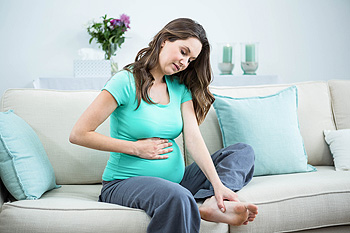 For pregnant women, the general health of the feet may be affected. The additional weight gain may cause the feet to become bloated, and has been known to alter some women’s sense of gravity. The alignment and posture in the body may change, and the feet may become affected as a result of the differences in standing and walking that many women endure. Becoming flat-footed is a common ailment that may affect many pregnant women. The arches may temporarily disappear as a result of the pressure the feet must withstand from the additional weight. Additionally, edema, or water retention, is a common condition that many pregnant women experience, and this typically occurs as a result of the blood becoming thicker during the pregnancy. There are several ways to partially alleviate any discomfort that is often associated with edema. These may include elevating your feet as often as possible, eliminating salt from your diet, and stretching the feet, which may enhance the general health of the body. If you have concerns about the effects of pregnancy on the feet, please consult with a podiatrist for additional information.
For pregnant women, the general health of the feet may be affected. The additional weight gain may cause the feet to become bloated, and has been known to alter some women’s sense of gravity. The alignment and posture in the body may change, and the feet may become affected as a result of the differences in standing and walking that many women endure. Becoming flat-footed is a common ailment that may affect many pregnant women. The arches may temporarily disappear as a result of the pressure the feet must withstand from the additional weight. Additionally, edema, or water retention, is a common condition that many pregnant women experience, and this typically occurs as a result of the blood becoming thicker during the pregnancy. There are several ways to partially alleviate any discomfort that is often associated with edema. These may include elevating your feet as often as possible, eliminating salt from your diet, and stretching the feet, which may enhance the general health of the body. If you have concerns about the effects of pregnancy on the feet, please consult with a podiatrist for additional information.
Pregnant women with swollen feet can be treated with a variety of different methods that are readily available. For more information about other cures for swollen feet during pregnancy, consult with one of our podiatrists from New Tampa Foot & Ankle. Our doctors will attend to all of your foot and ankle needs.
What Foot Problems Can Arise During Pregnancy?
One problem that can occur is overpronation, which occurs when the arch of the foot flattens and tends to roll inward. This can cause pain and discomfort in your heels while you’re walking or even just standing up, trying to support your baby.
Another problem is edema, or swelling in the extremities. This often affects the feet during pregnancy but tends to occur in the later stages.
How Can I Keep My Feet Healthy During Pregnancy?
- Wearing orthotics can provide extra support for the feet and help distribute weight evenly
- Minimize the amount of time spent walking barefoot
- Wear shoes with good arch support
- Wear shoes that allow for good circulation to the feet
- Elevate feet if you experience swelling
- Massage your feet
- Get regular, light exercise, such as walking, to promote blood circulation to the feet
If you have any questions please feel free to contact our office located in Wesley Chapel, FL . We offer the newest diagnostic and treatment technologies for all your foot and ankle needs.
Foot Care for Pregnant Women
The natural weight that pregnant women gain causes their center of gravity to be completely altered. This causes them to have a new weight-bearing stance which adds pressure to the knees and feet. As a result, pregnant women often experience severe foot pain. The two most common foot issues experienced by women in their pregnancies are edema and over-pronation. It is important for all pregnant women to learn more about how to take care of their feet so they are more comfortable during their pregnancy.
Over-pronation, which is commonly referred to as flat feet, is caused when a person’s arch flattens out upon weight bearing. This causes the person’s feet to roll inward while walking. Pregnant women often experience this due to the sudden weight they gain.
Edema, also referred as swelling in the feet, typically occurs in the later part of the pregnancy. It is the result of the extra blood accumulated in the pregnant woman’s body. The enlarged uterus puts more pressure on the blood vessels in the pelvis which causes leg circulation to slow down. This causes blood to pool in the lower extremities.
Fortunately, there are ways to treat both edema and over-pronation. Edema can be treated by elevating the foot as often as possible. Wearing proper fitting footwear will also be helpful for those with edema. A treatment method for over-pronation could be orthotics. Orthotic inserts should be designed with appropriate arch support and medial rear foot for your foot.
It is best for pregnant women to buy new shoes during the day, because this is the time where swelling is at its peak. Pregnant women also shouldn’t rush when buying shoes. It is always advised that you make sure your shoes fit properly but this is especially important during pregnancy.
If you are a pregnant woman, you should consult with a podiatrist in order to make sure your feet are healthy throughout the entirety of your pregnancy.


